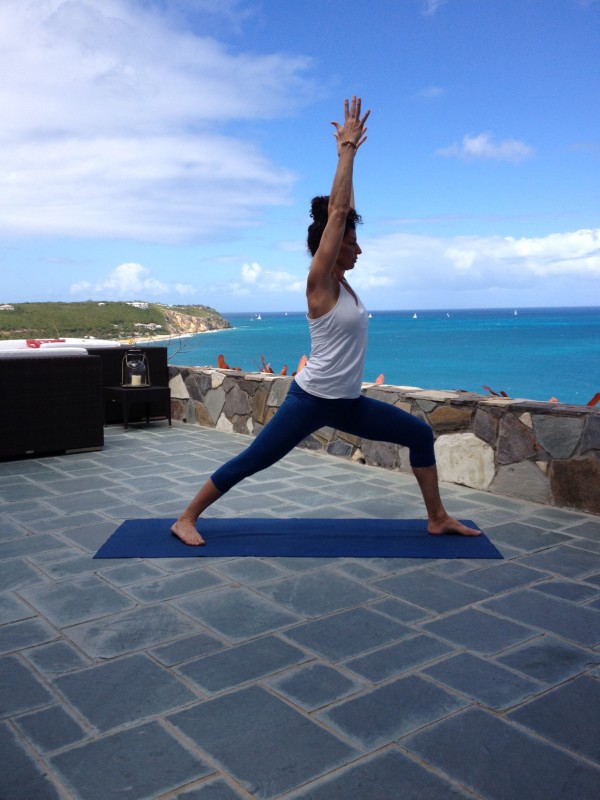
I had a student in class recently who was returning after some time. He checked in and said he had a rotator cuff issue. I asked him if he was diagnosed as such and he said no, he was just guessing (note: always ask your students where they got the diagnosis they state. Often, they are self-diagnosing and it could be something completely different).
I asked him what hurts and he said it hurts when he elevates his arm out to the side (abduction). I asked him if turning his palms downward (internal rotation) hurt or if turning his palms outward (external rotation) hurt and he said a it did hurt a bit when he turned them inwards. I asked if he had tried putting pressure on his arms while internally rotating, as you’d see in a Downward Dog, and he said no, he hadn’t practiced in a while.
We left it that he’d modify if he needed to; we discussed skipping Low Push Up entirely as well as using a strap for any binds behind the back to increase the range of motion available to the shoulder. He agreed and we proceeded into the studio.
Before we go on, let’s take a look at the muscles of the shoulder, primarily the rotator cuff group. Now, keep in mind, there are other muscles of the shoulder, like the deltoid, that could be causing the issue here but until or unless he was x-rayed and diagnosed, we will really never know which specific muscle is at issue. But we can use this case study to take a look further into the muscles of the shoulder.
The supraspinatus is on the top of the shoulder. I like to think of it as “super” or “on top”. It’s responsible for abducting the arm. It works in partnership with the deltoid to move the arm out to the side. Interestingly enough, there is a large bursa, or fluid filled sac, that is at one end of this muscle and it lies under the acromion (the furthest point of the spine of the scapula). This can sometimes get irritated and cause pain.
Origin: Supraspinous fossa on posterior shoulder blade
Insertion: Greater tubercle of the humerus

The infraspinatus is an internal rotator and sits in the back of the body, on the posterior surface of the shoulder blade.
Origin: Infraspinous fossa
Insertion: Greater tubercle of the humerus
The teres minor also sits on the back of the body and is an internal rotator.
Origin: Lateral border of the scapula
Insertion: Greater tubercle of the humerus
The subscapularis is an internal rotator. I like to think of this muscle as “sub” like a submarine, which as it goes under the water, this muscle is under the shoulder blade. If you look at someone from the front, this muscle would be in the underside part of the shoulder blade you’d be looking at if you looked straight through them.
Origin: Anterior surface of the scapula
Insertion: Lesser tubercle of the humerus

One way to remember the muscles that collectively form the rotator cuff is that if you take the first letter of each muscle it creates the word “SITS” for supraspinatus, infraspinatus, teres minor, subscapularis.
Now, back to our student. As I watched him practice, it was clear he was feeling okay because he was practicing without modifying and take both regular and side crow. As I watched him lift his arms up in poses like Warrior 1 and Warrior 2, he seemed to be doing so without obvious discomfort, so I was thinking that perhaps the issue was minor. He left saying he felt good and didn’t notice much pain during practice.
Again, our job as teachers is not to diagnose our students. But it can be very helpful to have a basic understanding of the major muscles in the body to help us understand what might be going on when a student reports an injury.
Also, remember that there is often more than one muscle that does the same thing. Isolating what specific muscle is injured is better left to physicians. But it can be helpful to ask questions of your students as I did with this person, to try to get an understanding of what specific actions create discomfort.
(Images from Gray’s Anatomy 1918 and are in the public domain).Â
